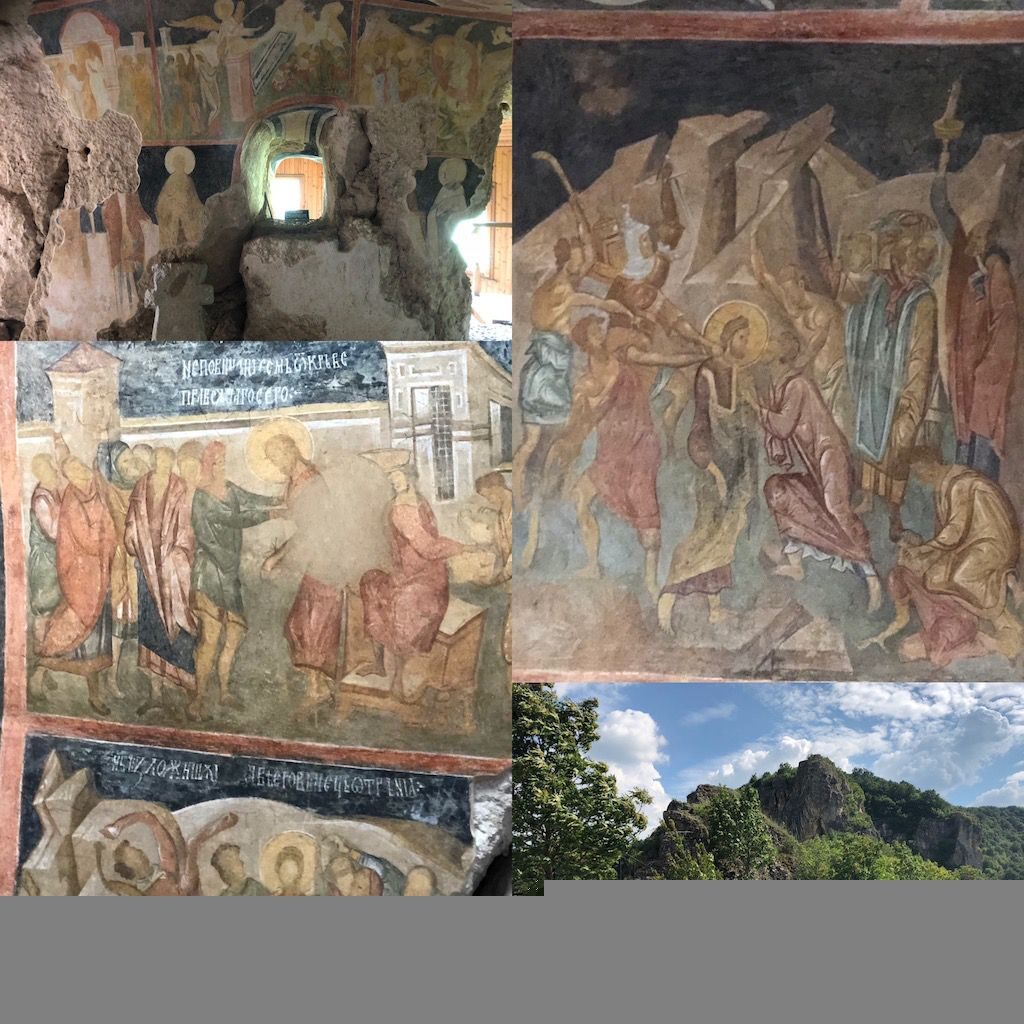Date and Time of Visit: July 18, 2018, approximately 4:00 p.m.
This is the third World Heritage Site of the day. The Rock Churches of Ivanovo are a group of churches known for their beautiful, well-preserved medieval frescoes, located on a rocky bank rising from the Rusenski Lom River, 20 km south of the Bulgarian town of Ruse on the border with Romania. By the way, Ruse is where we stayed this day. This was the last day of our sightseeing in Bulgaria.
The Rock Churches of Ivanovo were declared a World Heritage Site in 1979, which makes them one of the oldest World Heritage Sites in the world, but for some reason they are not included in the list of World Heritage Sites on the official tourist website of Bulgaria, which I have been referring to a lot in my writing. ….
If you look at the pictures on the internet or in the guidebook, you can easily see that it is obviously built on a high cliff, but even if you are guided by Google Maps and you are only a few kilometers away from the site, you can’t see any mountains at all, only low forests and meadows with trees that you can see for more than 10 kilometers. It is not visible.
But as we got closer to the site, a crevasse-like valley jumped out at us. Down here, we arrived at our destination, the rock churches. In other words, they were not built into the mountain, but rather into the valley.
So, we drove to the bottom of the canyon. Park your car around the entrance. There was a small hut where they sold food, drinks, snacks and souvenirs, but apparently tickets for the churches were to be purchased in front of the actual church, which was up the canyon again from here. So we did our best to climb up the canyon.
There are two main routes, one is a shortcut but hard slope, the other is a long way but gentle slope. We took the gentle route to the church.
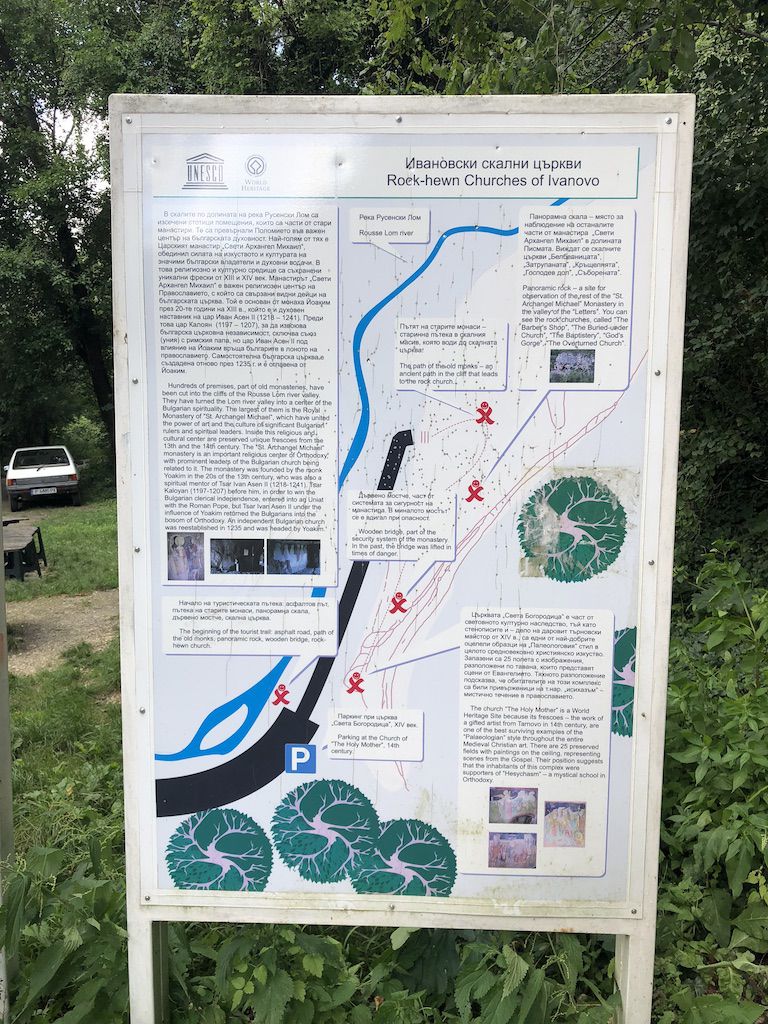
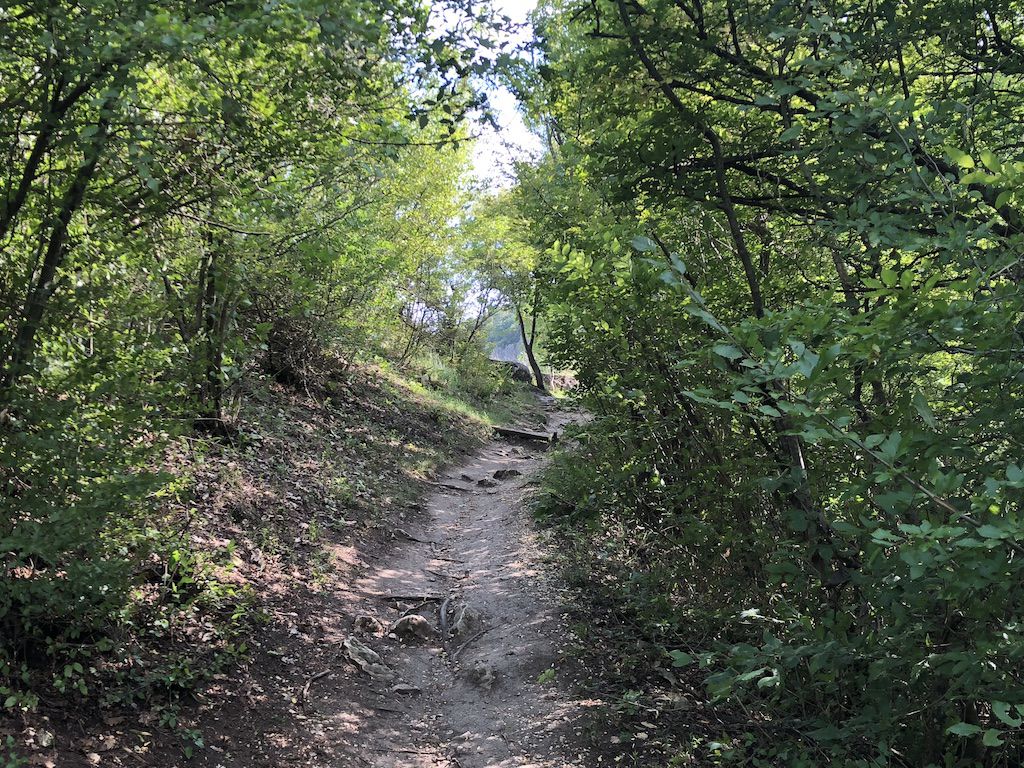
It was more humid in Bulgaria than I expected, so I think we sweated. Still, the wind was strong at the top of the canyon, so I think it was a little cold in short sleeves.
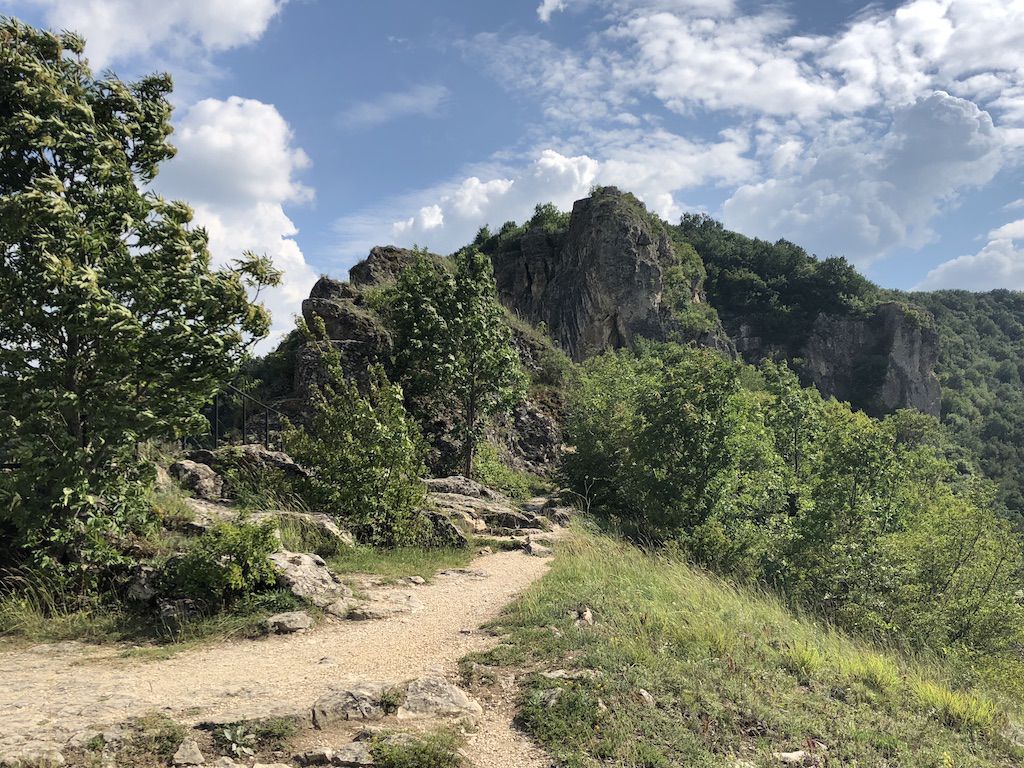
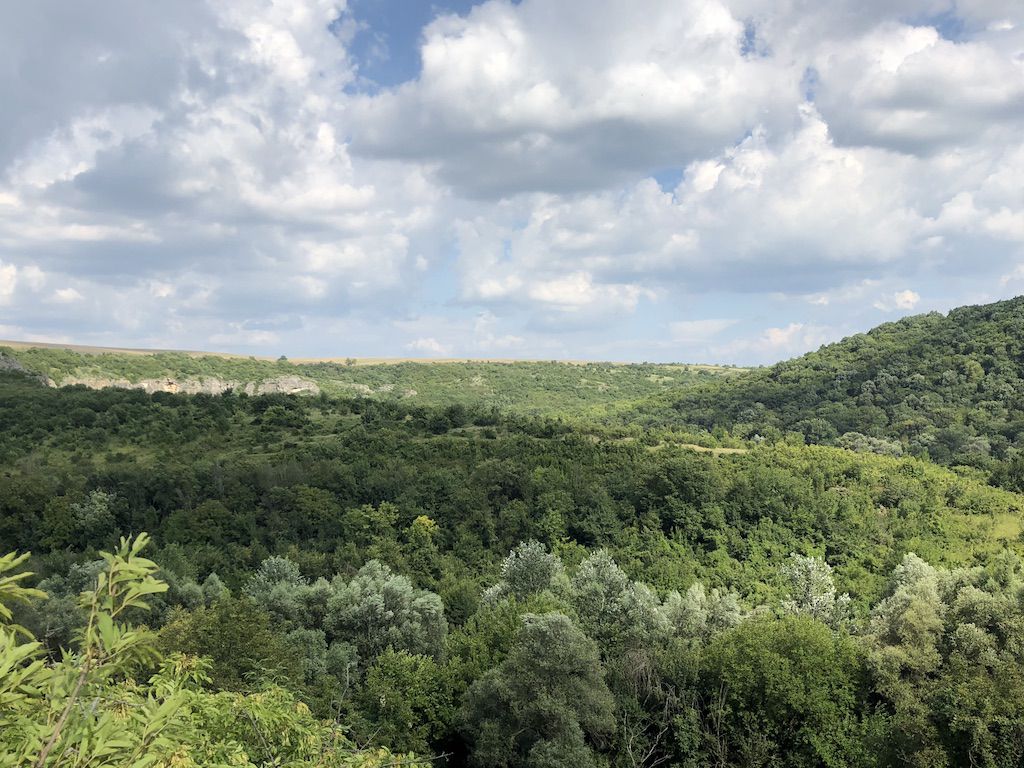
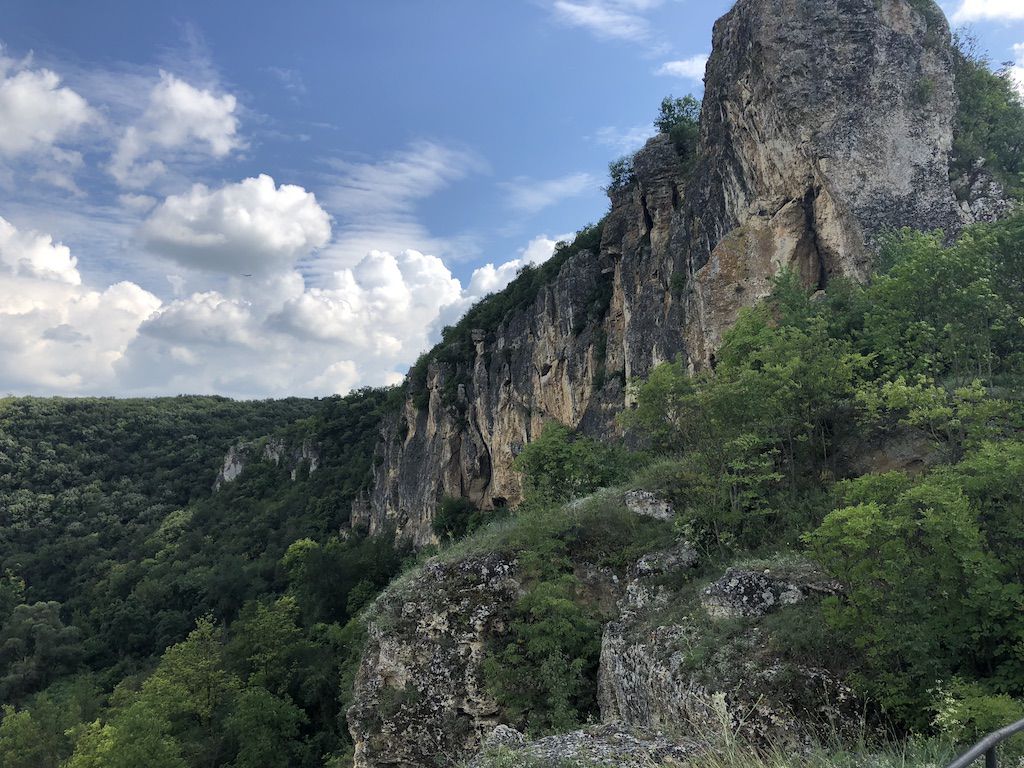
At the Rock Church, there is a guide and you pay the entrance fee to him.
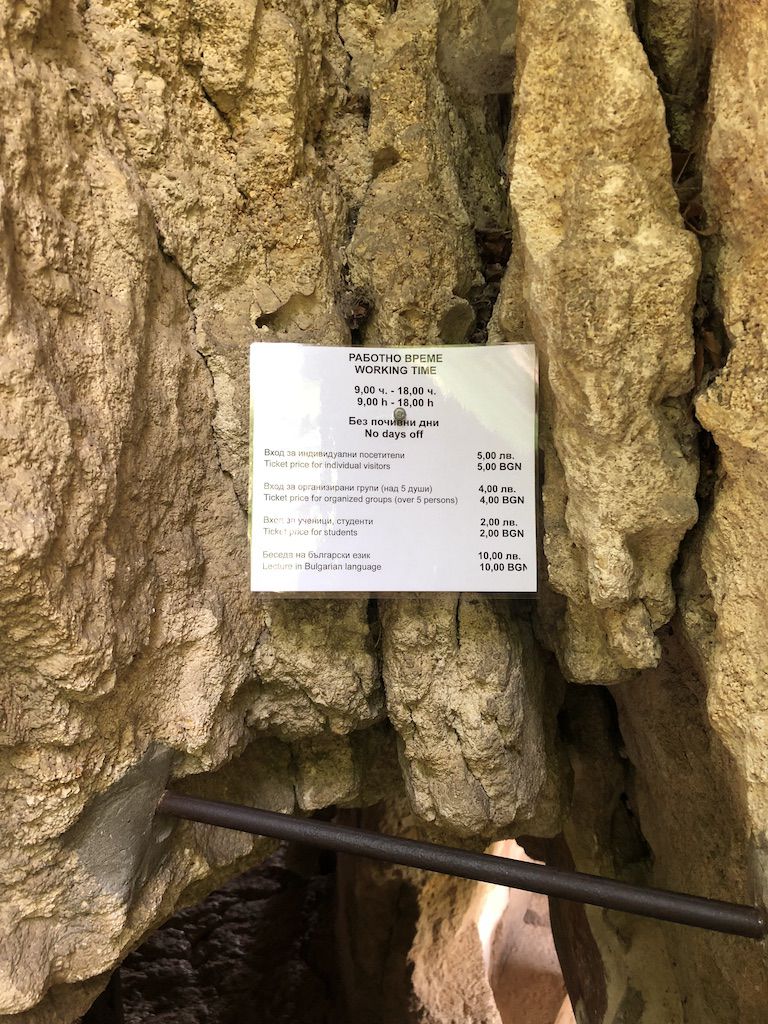
They also speak English and will occasionally explain the inside of the building to you in English. They can also lend you a pamphlet with a simple explanation in English.
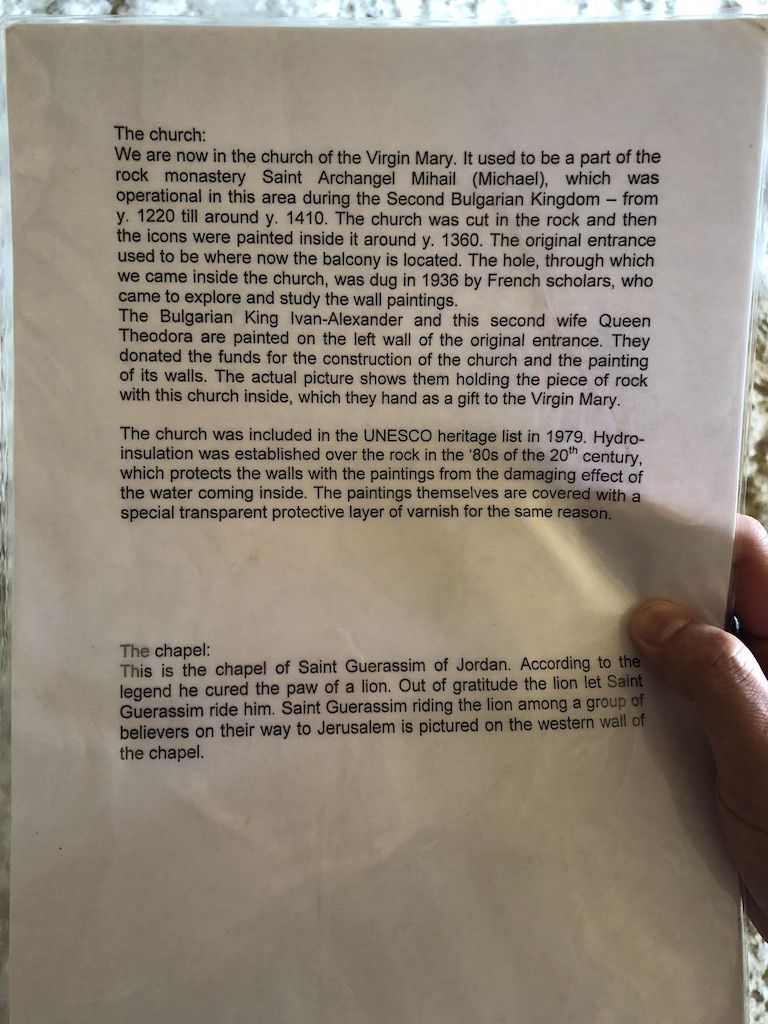
By the way, the guide of this day had studied in Japan (I think he said Tsukuba), so he could speak a little Japanese. It was no problem for daily conversation. He told us that Japanese tourists often visit this place which is quite remote.
The rock church is very narrow and has a low ceiling. At the entrance, be careful above your head. Inside is the height that can be normal even if the ceiling goes low.
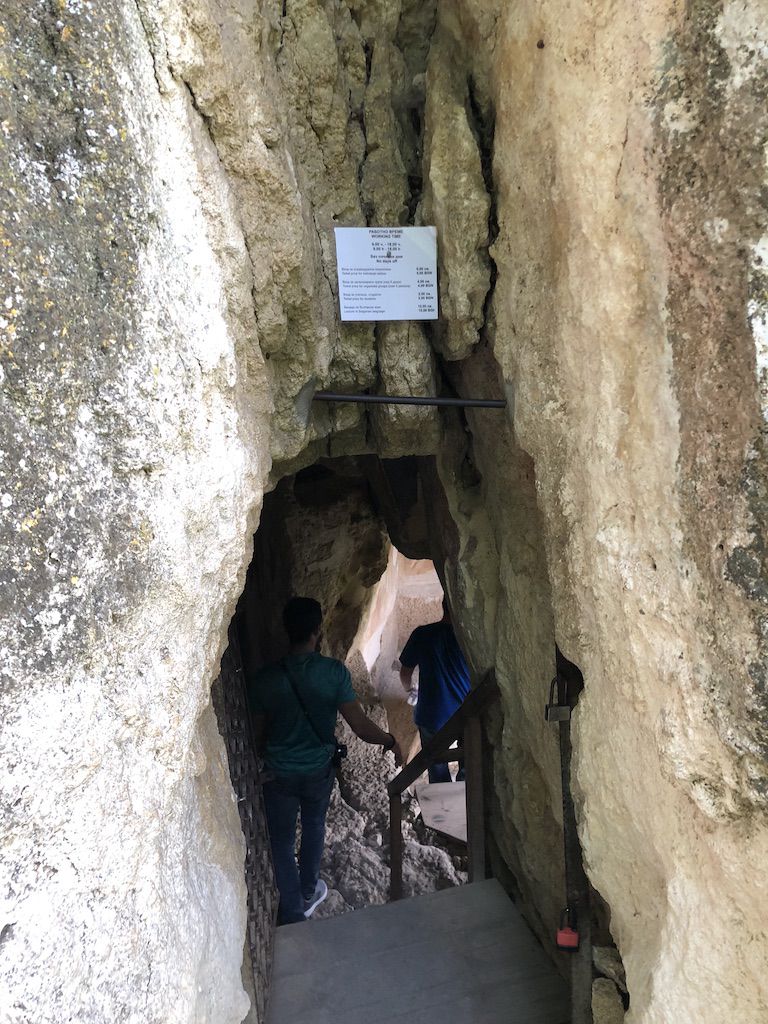
As you can see, there are vivid frescoes all over this narrow cave.
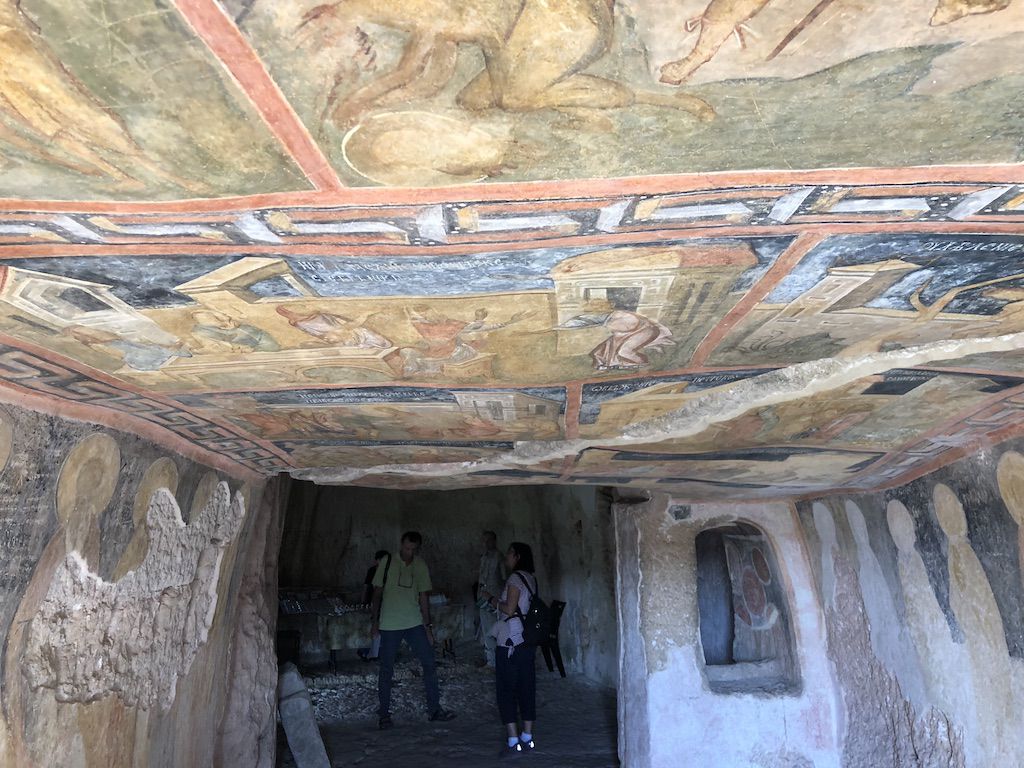
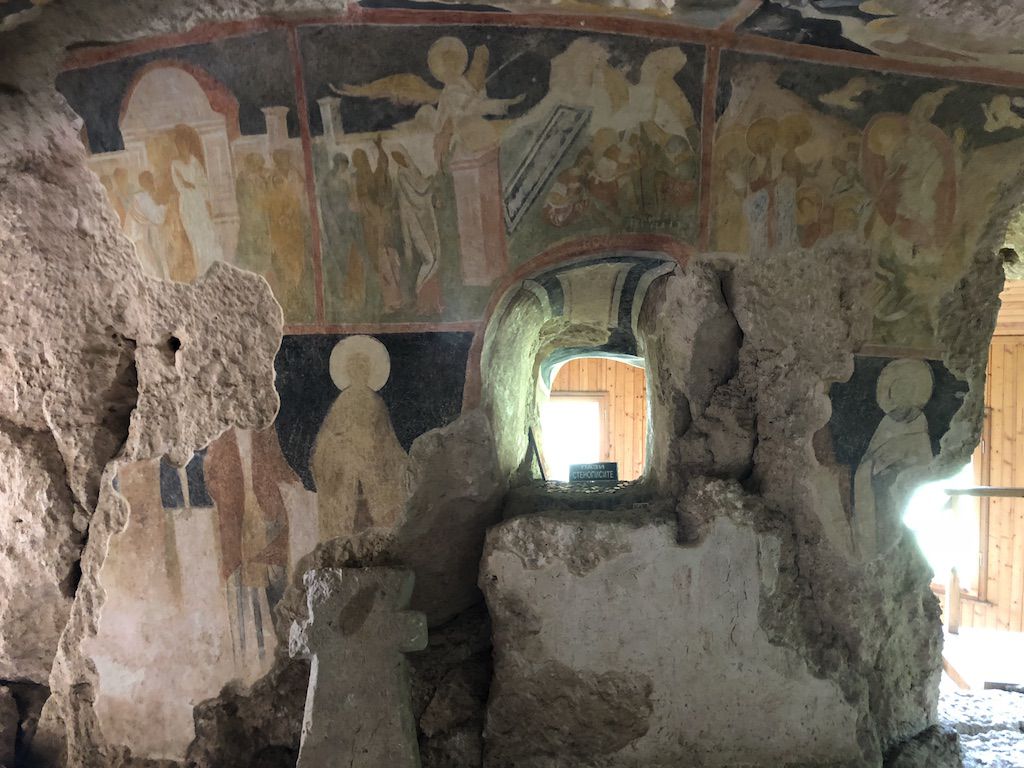
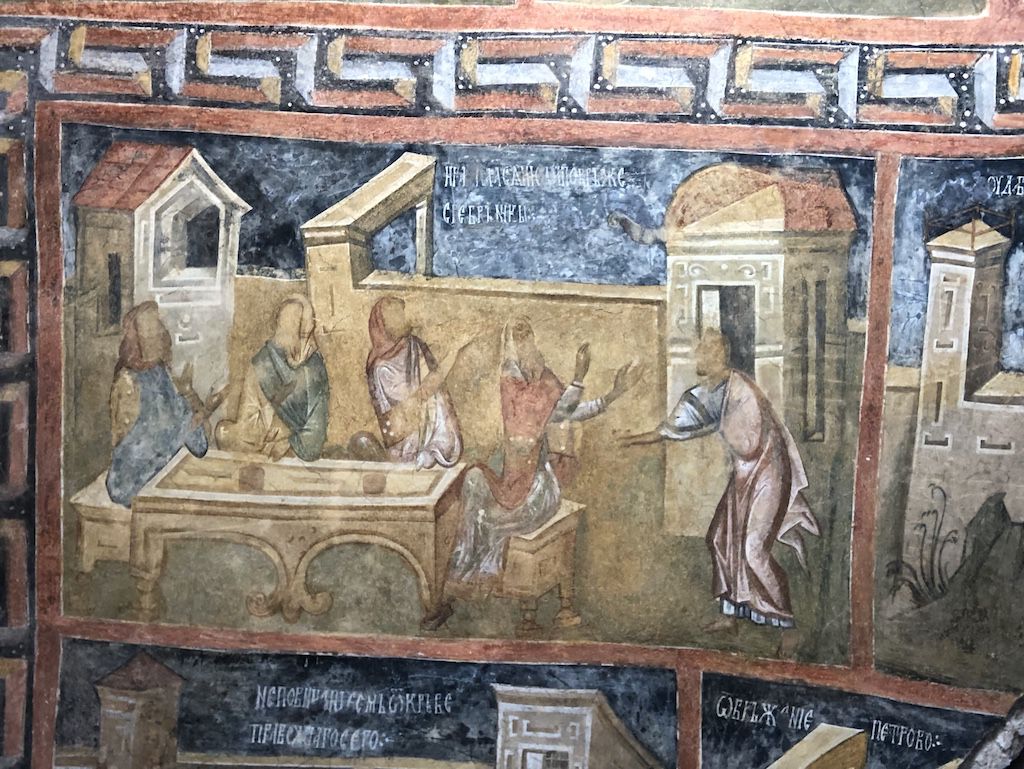
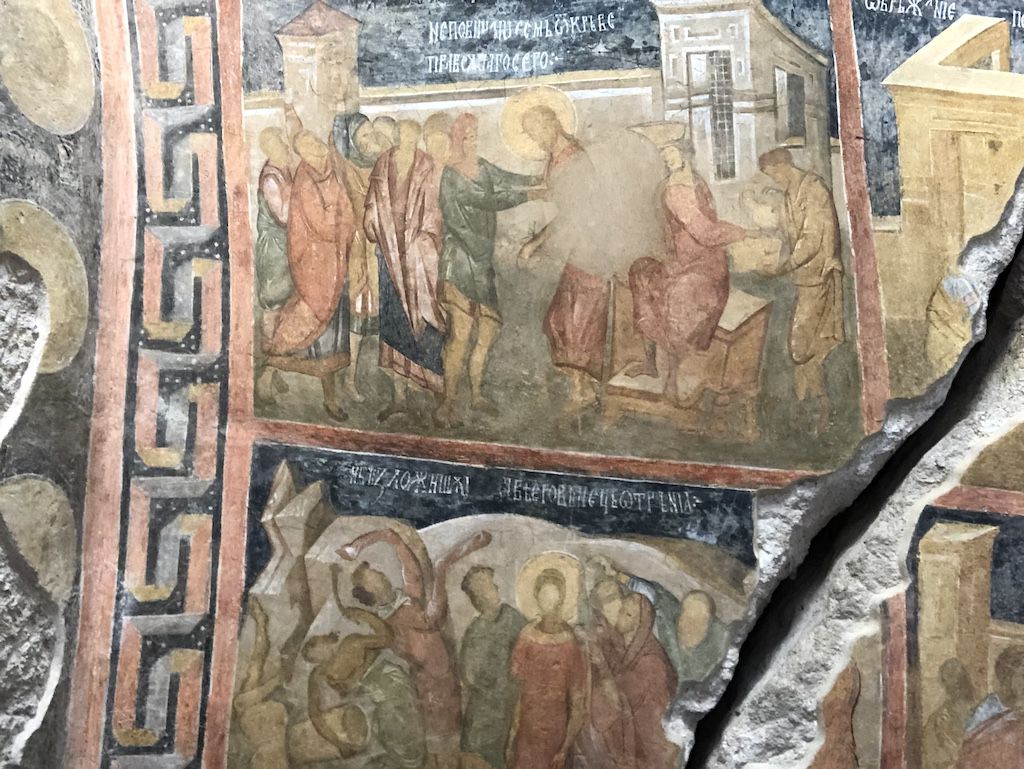
The rock church we visited was discovered by French archaeologists in 1936. These colorful frescoes in the church date back to the Second Bulgarian Empire (1220-1410), around 1360.
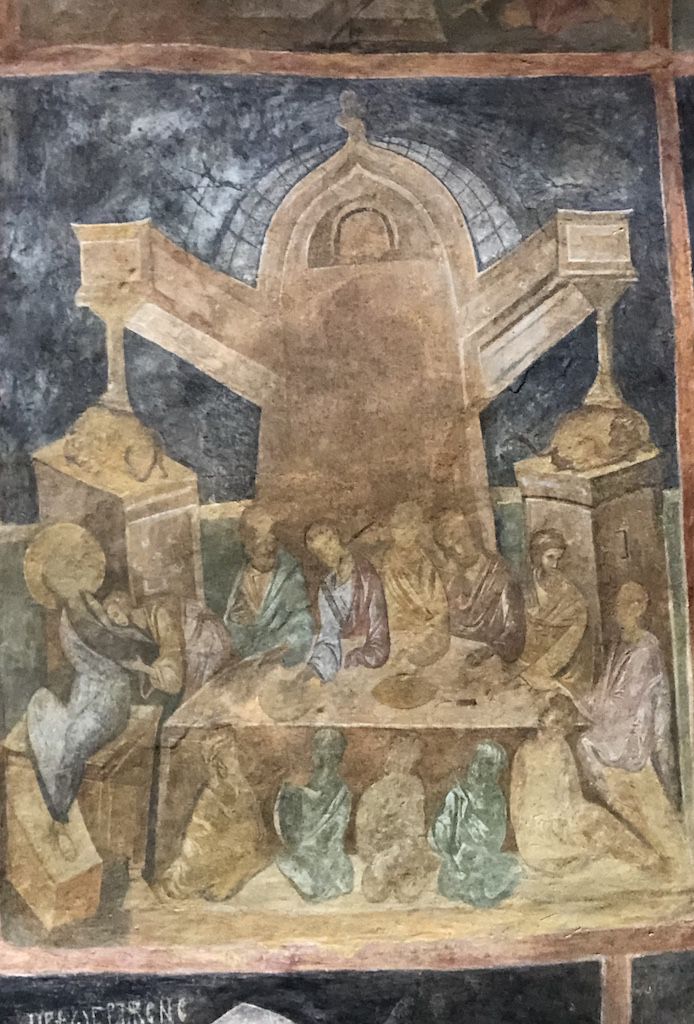
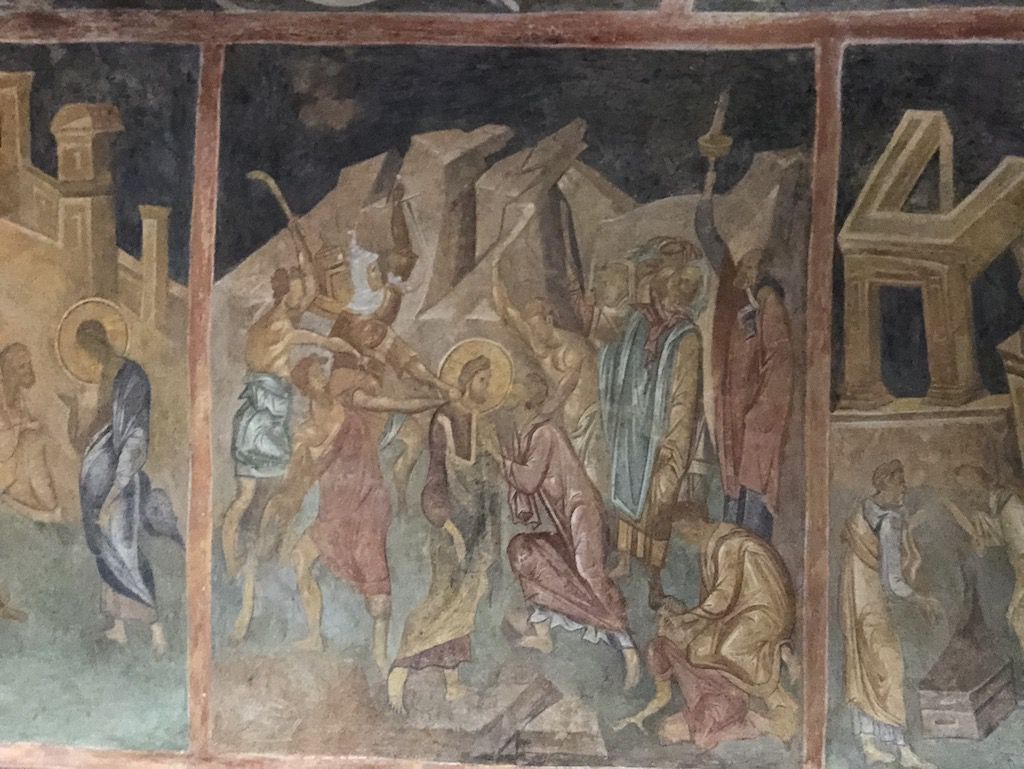
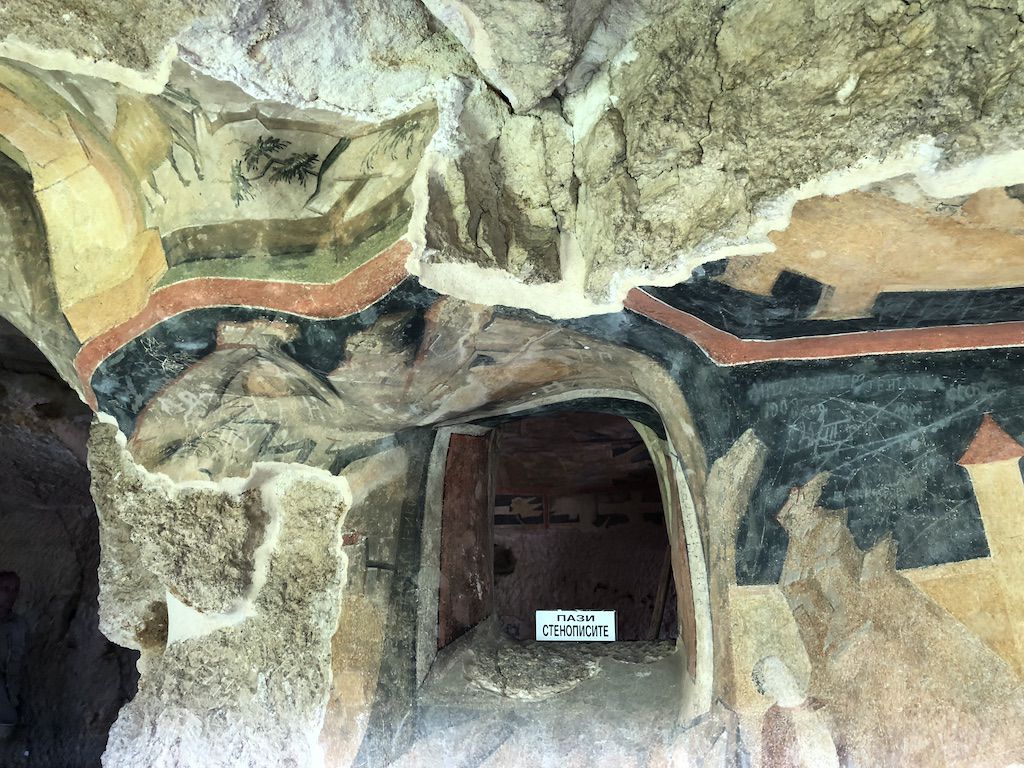
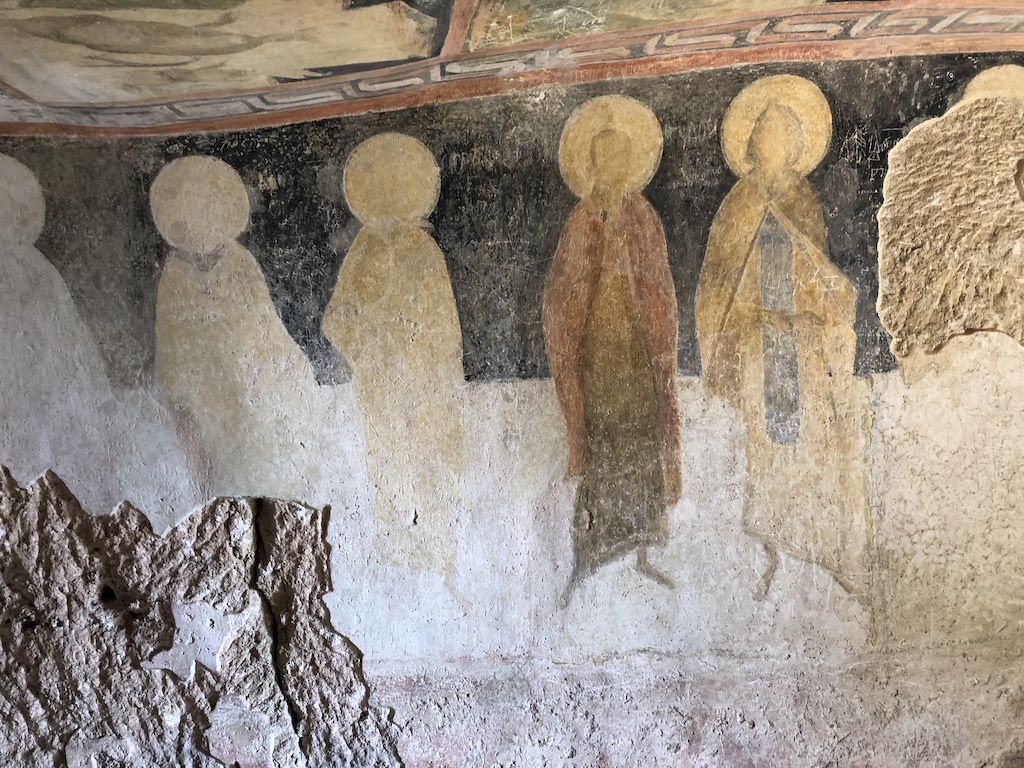
Ivan Aleksandar, the king of the Second Bulgarian Empire, and his wife Theodora, the donor of the rock church, are depicted on the wall to the left of the entrance. But I missed to take a picture? I didn’t know which one it was.
Although it is hard to tell from looking at the frescoes, the entire frescoes are actually covered with a transparent varnish to prevent damage from water erosion. Thanks to this varnish, we are able to see the frescoes, but I wonder if it is okay to varnish them.
I returned to the parking lot by a shortcut route with a steep hill. It must have been just after 5pm. From here we headed to the border town of Ruse, where we would spend our last night in Bulgaria.
